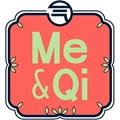Hemorrhagic Feversaccording to TCM
*redirected from Hemorrhagic fever
Symptom family: Fever and Temperature-Related Conditions
Parent symptom: Fever
What is hemorrhagic fever?
Hemorrhagic fevers are a group of illnesses characterized by fever and bleeding disorders. These diseases are typically caused by viral infections, and they can lead to severe, life-threatening conditions if not treated promptly. Symptoms of hemorrhagic fevers include high fever, fatigue, dizziness, muscle aches, and bleeding from various parts of the body such as the gums, nose, and even internal organs. Hemorrhagic fevers are a subset of fevers that involve significant bleeding, differentiating them from other types of febrile illnesses.
How does TCM view hemorrhagic fevers?
Traditional Chinese Medicine (TCM) views hemorrhagic fevers through the lens of internal disharmony. Unlike Western medicine, which often focuses on the pathogens causing the disease, TCM emphasizes the underlying imbalances within the body that allow these pathogens to take hold. In TCM, hemorrhagic fevers can result from various patterns of disharmony such as Heat in the Blood or Qi and Yin Deficiency. Identifying the specific pattern of disharmony is essential for effective treatment, as different patterns require different therapeutic approaches.
Causes of hemorrhagic fevers according to TCM
In Traditional Chinese Medicine, hemorrhagic fevers are seen as a manifestation of internal disharmony that can be attributed to several patterns. One common pattern is Heat in the Blood, characterized by symptoms such as high fever, restlessness, thirst, bleeding gums, nosebleeds, and a rapid pulse. This pattern indicates that the heat is causing the blood to move recklessly, leading to various forms of bleeding.
Another significant pattern is Lung and Stomach Heat Injuring the Qi and Fluids. This pattern often presents with high fever, dry mouth, thirst, irritability, and a sensation of heat. The excessive heat damages the Qi and Body Fluids, leading to dehydration and further complications. Recognizing these patterns is crucial for effective treatment in TCM, as each requires a specific therapeutic approach.
TCM Herbal Formulas for Hemorrhagic Fevers
In TCM, the treatment of hemorrhagic fevers involves using herbal formulas that are tailored to address the underlying pattern of disharmony. For Heat in the Blood, Shi Hui San is a recommended formula. This formula includes Japanese Thistle (Da Ji) as a key herb, which helps to cool the blood and stop bleeding. Shi Hui San is particularly effective in treating patterns where Heat in the Blood leads to severe bleeding.
For patterns involving Lung and Stomach Heat Injuring the Qi and Fluids, Zhu Ye Shi Gao Tang is commonly used. This formula features Gypsum (Shi Gao) as a key herb, which is known for its cooling properties. Zhu Ye Shi Gao Tang helps to clear Heat from the Lung and Stomach, replenish fluids, and support the body’s Qi. These formulas provide a comprehensive approach to managing hemorrhagic fevers by targeting the specific patterns of disharmony.
Explore below some TCM herbal formulas used to address hemorrhagic fevers, organized by formula type.
- By Formula Type
- Formulas that stop bleeding
- Formulas that clear qi-level heat
Formulas that stop bleeding
Hemorrhagic fevers can be treated by these formulas when it is caused by various factors leading to bleeding, requiring hemostatic actions.
One such formula is Shi Hui San, with japanese thistle as a key herb.
Formulas that clear Qi-level Heat
Hemorrhagic fevers can be treated by these formulas when it results from an intense heat condition at the qi level, affecting the body's energy flow.
One such formula is Zhu Ye Shi Gao Tang, with gypsum as a key herb.
TCM Herbs for Hemorrhagic Fevers
Explore below some TCM herbs used to address hemorrhagic fevers, organized by herb category.
- By Herb Category
- Herbs that stop bleeding
- Herbs that cool the blood
- Herbs that clear heat and purge fire and/or clear summer heat
Herbs that stop bleeding
Hemorrhagic fevers can be treated by these herbs in cases where it is due to internal or external bleeding, working to stabilize and constrict blood flow.
One such herb is Japanese Thistle (Da Ji), a key herb in some formulas recommended for hemorrhagic fevers, like Shi Hui San.
Herbs that cool the Blood
Hemorrhagic fevers can be treated by these herbs when it is a consequence of excess heat in the blood, helping to cool and detoxify the blood.
One such herb is Field Thistles (Xiao Ji), a key herb in some formulas recommended for hemorrhagic fevers, like Shi Hui San.
Herbs that clear Heat and purge Fire and/or clear Summer Heat
Hemorrhagic fevers can be treated by these herbs when it arises from excessive internal heat or fire, aiding in cooling the body and balancing internal temperature.
One such herb is Gypsum (Shi Gao), a key herb in some formulas recommended for hemorrhagic fevers, like Zhu Ye Shi Gao Tang.
